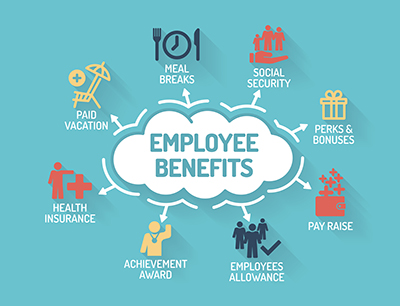Some benefits will, by default, benefit some employees but not others. Sometimes, this is a result of the employees who choose to utilize them. Sometimes, it’s because not all employees are eligible for certain benefits. But sometimes, it stems from a difference in employee familial status: Married employees with children often get a better deal when it comes to several common employer benefits.
 With fewer people getting married in recent years, this could make more employees feel frustrated and as though they’re not being treated the same as their married counterparts. While it is likely not a situation that will result in a discrimination claim, it could easily impact morale.
With fewer people getting married in recent years, this could make more employees feel frustrated and as though they’re not being treated the same as their married counterparts. While it is likely not a situation that will result in a discrimination claim, it could easily impact morale.
Let’s take a look at how certain benefits help some employees more than others.
How Certain Benefits Can Help Some Employees More than Others
Here are a few examples of benefits that may have a bigger impact on married employees and/or employees with children:
- Health insurance. If you offer a family health insurance plan option, that option will often have an even bigger discount over what the original premium would have been without the employer’s help. As such, employers are paying a bigger share for married employees and/or employees with dependents.
- Family and Medical Leave Act (FMLA) benefits or other family-related leave. While FMLA leave can be taken by anyone (assuming, of course, the employer is a qualified employer and the employee has met the qualification requirements), it is another benefit that may be utilized more by employees with a spouse and/or dependents because they may have more family-related medical needs that require time off work. Of course, no one would wish for medical problems as a reason to get time off work, but this situation can be especially sticky if the employer offers extra family leave or other paid days off (concurrent with the unpaid FMLA requirement at the federal level) for such needs, which might make those who don’t need to take this time off feel as though they don’t have as many benefits.
- Bereavement leave is another example, especially if it doesn’t cover significant others if they’re not a spouse.
It’s not always the benefit that is the problem but rather the way it is administered. For example, some employers offer flexible scheduling only for employees with specific needs—like children—and not for all employees.
Sometimes, it’s not a stated benefit but the way employees are treated differently. For example, if a company doesn’t strictly track the number of sick days a parent takes when he or she leaves partway through the day to pick up a sick child from school or when he or she leaves early for children’s events, it could inadvertently give parents more paid time off (PTO). This alone can cause resentment.
These benefits may make those who benefit least feel disadvantaged and frustrated. They may also demonstrate that a bigger portion of the employer’s funds that go toward pay and benefits is being directed at only a subset of the employees, thus leaving less for things like pay raises for everyone. This could impact employee morale if not addressed.
